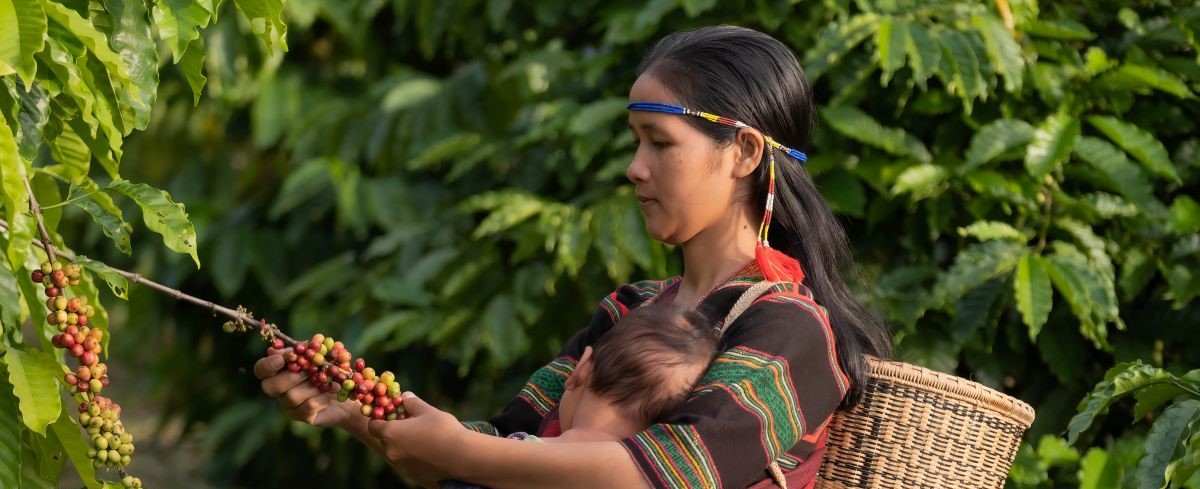Recognising Indigenous Knowledge in Cambodia’s Biodiversity Management
Inclusion of Indigenous Peoples is essential to safeguarding global biodiversity and is central to GCBC’s mission of leveraging biodiversity for climate resilience.
With a global population of over 476 million, Indigenous Peoples play a vital role in sustainability, managing or holding tenure rights to roughly a quarter of the Earth’s surface – regions that contain a significant share of the planet’s biodiversity. While disproportionately impacted by climate change, Indigenous Communities possess deep, place-based ecological knowledge that complements and enhances scientific research.
Recognising their critical role, the UN Convention on Biological Diversity (CBD) includes a dedicated Target 22 to ensure the full and effective participation of Indigenous Peoples. In alignment with this global recognition, GCBC upholds the rights and voices of Indigenous Peoples as a core principle, and as a prerequisite for awarding research grants
The following report has been written by Sam At Rachana, Research Lead, Cambodia Indigenous Peoples Organization (CIPO)
…………………………………………………………………………………………………………………………………………………………………………………….
During June and July 2025, Cambodia hosted two significant events to launch the GCBC funded project, “Recognizing and Rewarding the Contribution of Indigenous Knowledge for the Sustainable Management of Biodiversity.” These powerful gatherings connected Indigenous communities, researchers, youth, elders, conservationists, and government representatives in collaborative shared spaces.
As a Bunong Indigenous person and lead researcher for this project, I found these events profoundly meaningful. They were not only a celebration of Indigenous knowledge but a practical step toward inclusive, co-designed biodiversity governance in Cambodia.
For context, the Bunong people are one of Cambodia’s largest Indigenous groups. We have a deep connection to the forest, land, and spiritual world, as reflected in our traditional ecological knowledge and cultural practices, which center on respect for nature and the spirits of the land.
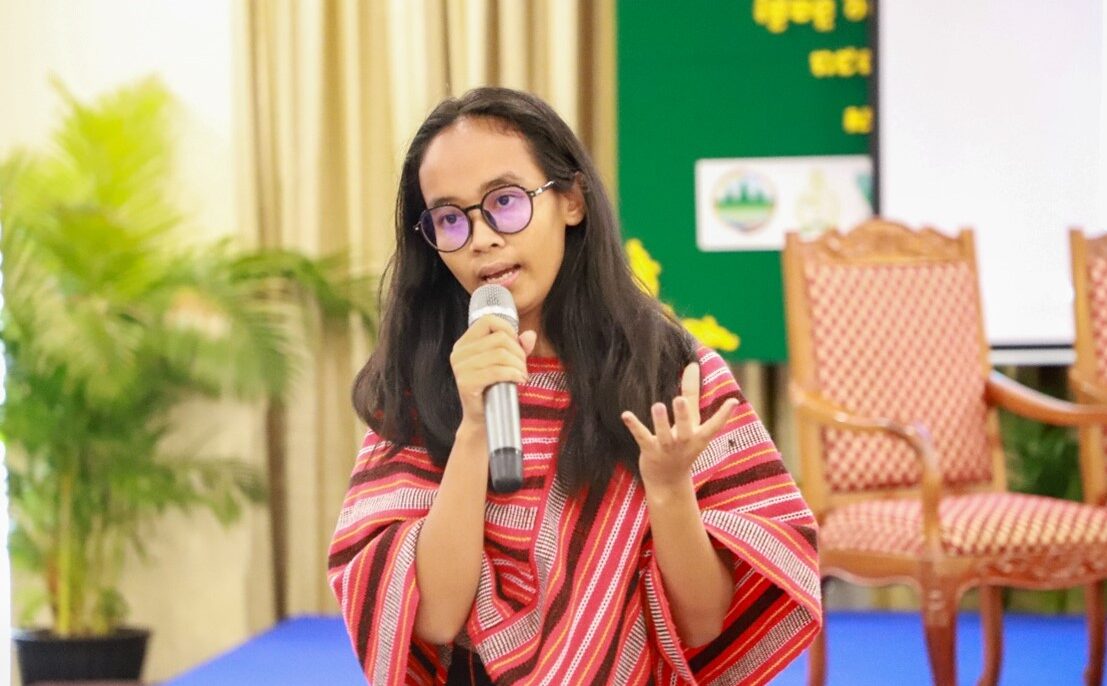
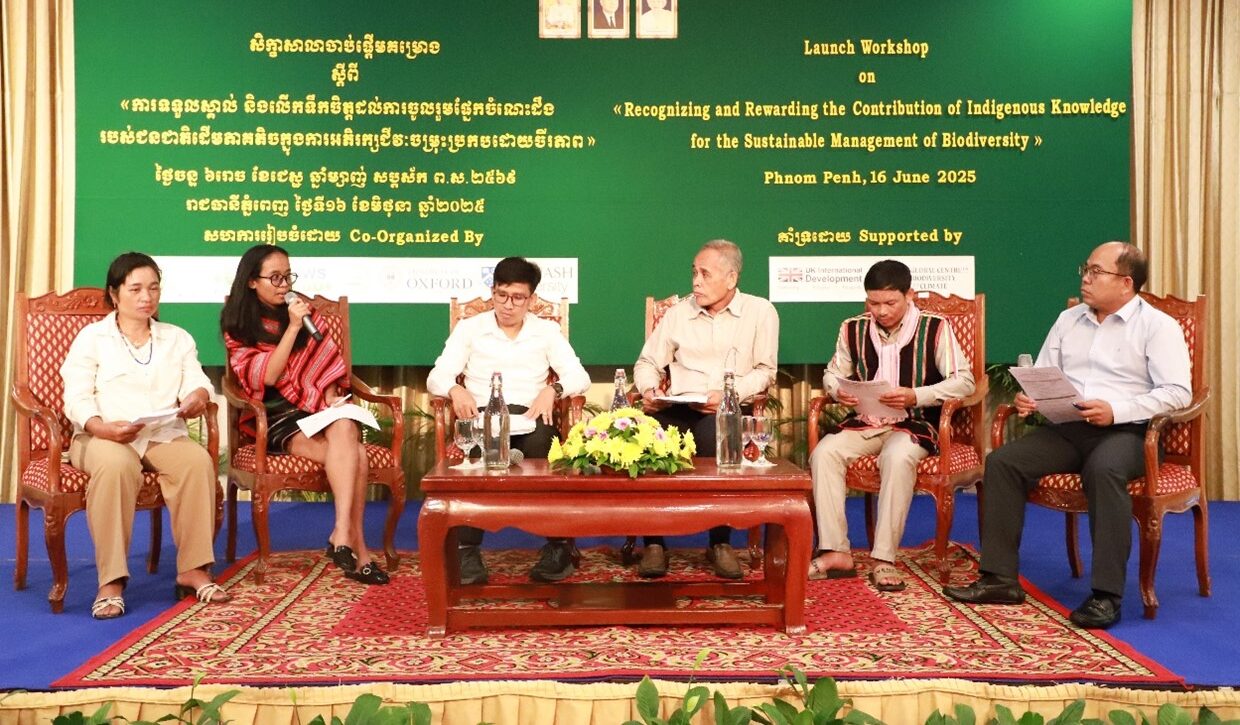

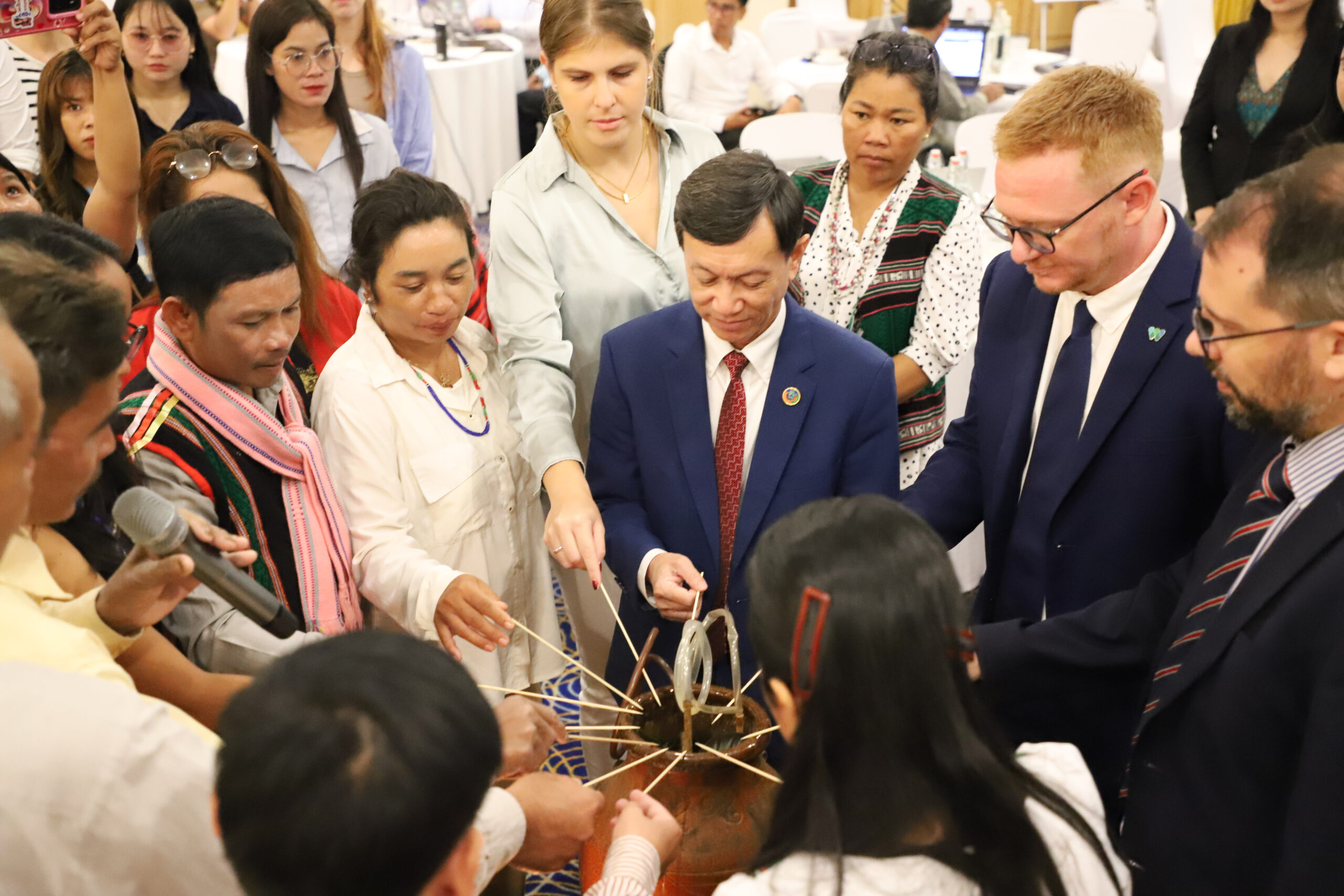
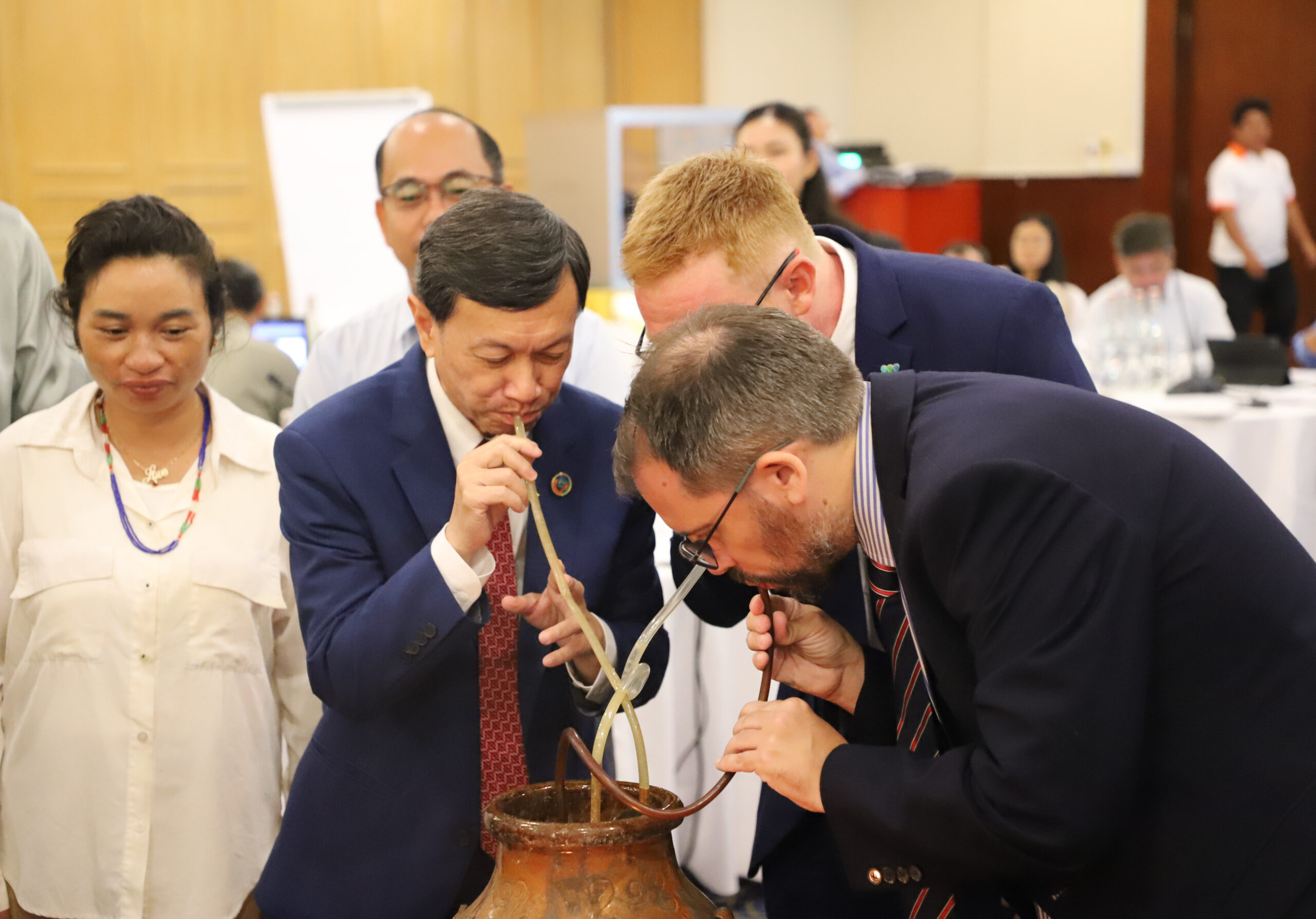
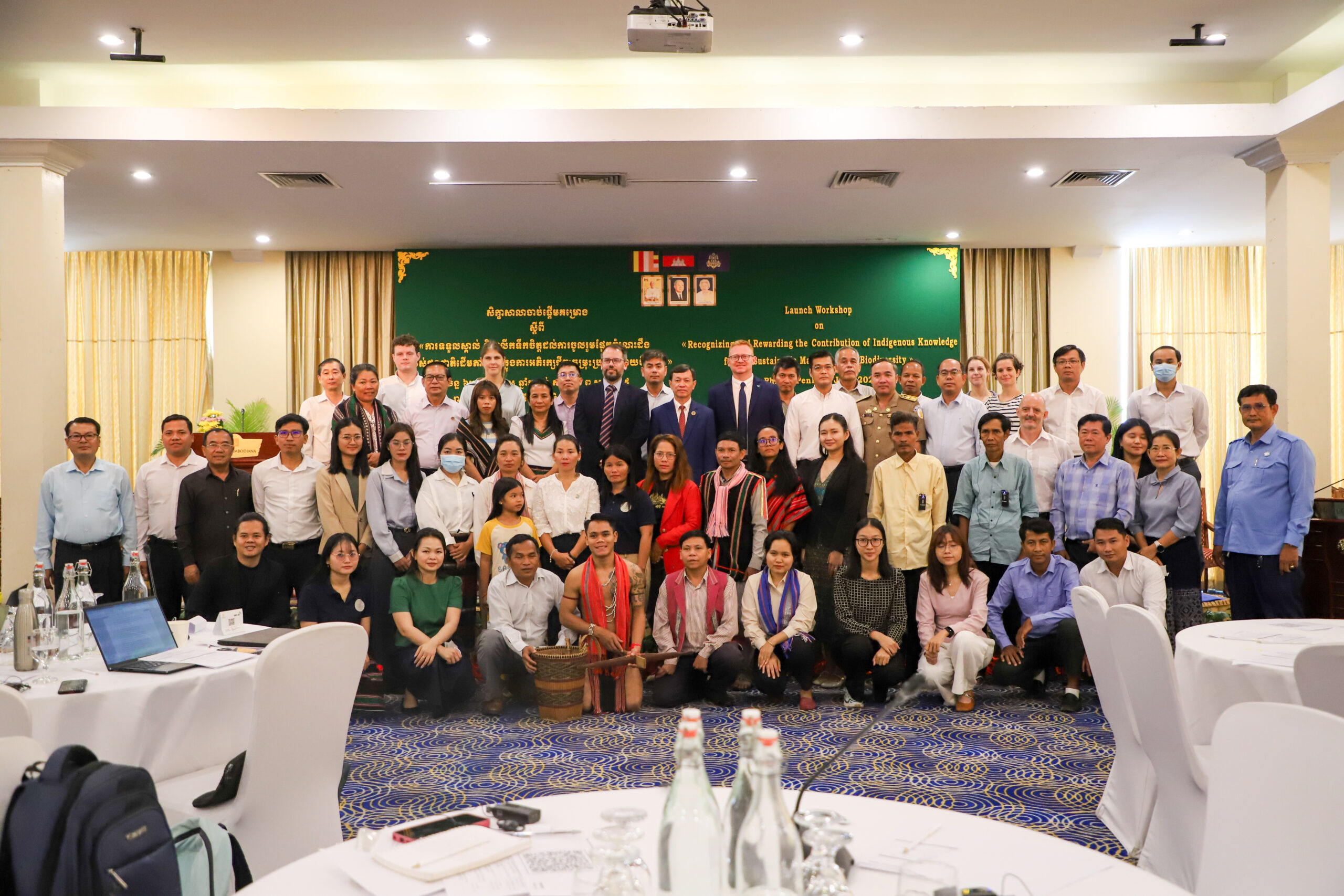
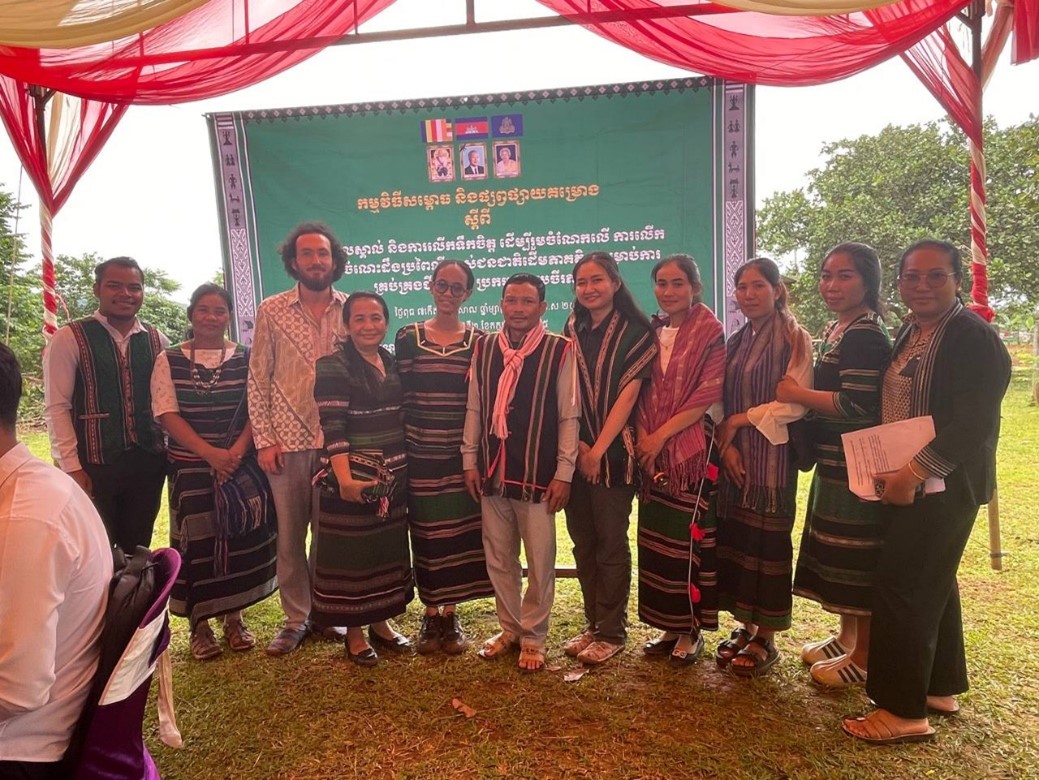
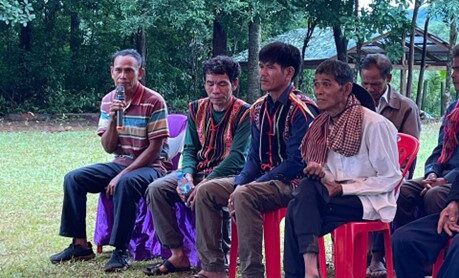
Images show 1) Rachana Sam At, Lead Researcher, CIPO, at the national project launch in Phnom Penh 2) Rachana Sam At, Lead Researcher, with Indigenous elders and government officials during a panel discussion at the project launch event 3-5) His Excellency Chuop Paris, Secretary of State of the Ministry of Environment, greets Mrs Yun Mane, CIPO Executive Director during the traditional opening ritual 6) Project researchers from CIPO, WCS, and the Royal University of Agriculture, with the Chief of the Indigenous community committee of Andong Kraleung village 7) Elders from Andong Kraleung village sharing their perspectives on the value of traditional knowledge.
This project aims to identify innovative approaches to enhance Indigenous stewardship of biodiversity within the Keo Seima Wildlife Sanctuary by exploring the knowledge and sustainable practices of the Bunong people. It is implemented by a consortium which includes the Wildlife Conservation Society (WCS), the Cambodia Indigenous Peoples Organization (CIPO), Monash University, the University of Oxford, the Royal University of Agriculture, and the Ministry of Environment.
Shared Beginnings
On June 16, 2025, the project launch took place at Phnom Penh’s Cambodiana Hotel. A traditional Bunong ritual, a symbolic act that grounded the project in Indigenous values and ways of being, showcased to all attendees, including officials and international partners, that Indigenous knowledge systems are living and deeply connected to nature.
A special performance by a young Indigenous man, blended traditional song with modern rap, demonstrating the innovative ways Indigenous youth are keeping their culture alive.
Featuring elders from the three participating communities, the panel discussion which followed marked a positive shift. Their direct address to officials, donors, researchers, and other stakeholders provided a crucial moment to address directly officials, donors, researchers, and other stakeholders. They shared stories, concerns, and ideas rooted in community, lived experiences, and ancestral knowledge, reminding everyone that Indigenous knowledge is a living, evolving spirit, passed down and actively practiced.
The active support of the Ministry of Environment added significant weight to the event. Their representatives not only attended but participated, listened, and expressed strong encouragement. One official even offered a three-day training on Participatory Action Research (PAR), that highlighted the potential for collaboration when understanding and respect are present.
Where Knowledge Lives
Following the national launch, a community event took place on July 2nd in Andong Kraleung village. Conducted in the traditional Bunong way, this event was an essential part of the Free, Prior and Informed Consent (FPIC) process, ensuring meaningful and culturally appropriate community engagement from the outset.
The Andong Kraleung launch was particularly special as it took place directly in the village, with the community leading. It began with a traditional Bunong dance performed by local students, a powerful display of cultural strength and identity. Mrs. Yun Mane, CIPO Executive Director, spoke about the importance of documenting Indigenous knowledge before it disappears, highlighting that for the Bunong, the forest is not merely a place but their market, bank, school, and sacred ground.
Dr Emiel de Lange, Wildlife Conservation Society, also shared insights, emphazing that Indigenous peoples have cared for the forest for centuries and possess unparalleled knowledge. He presented examples of documented traditional knowledge from Australia, encouraging the community to continue using their own voices to record their wisdom. This event felt like a strong, community-centered start.
Next Steps
The project will organize consultation meetings with Indigenous communities to identify research questions, clarify study objectives, and co-develop research questionnaires. These steps are crucial to ensure the research is grounded in Indigenous knowledge systems, supports self-determination, and addresses the communities’ real priorities.
Challenges lie ahead, including ensuring meaningful community participation throughout the research, as well as addressing power imbalances.
These recent events have left me feeling inspired, having witnessed elders, youth, researchers, and government genuinely engaging with one another. It reinforced my belief that efforts to amplify Indigenous voices are gaining traction and reminded me why I do this work: to see our knowledge recognized, respected, and rewarded in meaningful ways.
